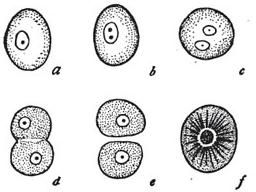Minimising mistakes at cell division
Die Chromosomenzahl in einer Keimzelle einer Art muss immer gleich bleiben. Zu viele Chromosomen verursachen Erkrankungen wie das Down-Syndrom, und zu wenige Chromosomen begünstigen Tumorerkrankungen.
Carriers of genetic information, chromosomes separate at cell division.
The centromere, a specialised structure on chromosomes, directs their
behaviour and ensures accurate segregation when the cell divides into
two. A protein structure, the kinetochore, assembles on the centromere
and is especially important as the chromosomes attach here on a spindle
ready for division.
The protein CENP-A is believed to distinguish centromere DNA from
other genetic material in the chromosome. The EU-funded 'Mechanisms of
CENP-A assembly and propagation at fission yeast centromeres' (S.P
CENP-A) project has completed research on regulation of chromatin CENP-A
assembly and integrity and its role in the kinetochore.
Looking at fission yeast, Schizosaccharomyces pombe, the researchers
used large-scale proteomic and genomic screens to identify new proteins
involved with CENP-A. The search revealed two relevant but previously
uncharacterised proteins, Eic1 and Eic2. Biochemical analyses showed
that Eic1 appears to directly influence CENP-A assembly in concert with
other kinetochore proteins. Eic2 might fulfil functions independent from
the kinetochore.
In collaboration with other labs including the University of Munich,
S.P CENP-A scientists have identified the four most promising factors
that influence CENP-A chromatin levels. By project end, the lab
experiments were researching the molecular mechanisms that affect CENP-A
chromatin assembly and maintenance. Future project work is planned on
application of the S.P CENP-A knowledge foundation to kinetochore
integrity and proteins that are necessary to make this possible.
As cell division is such a crucial part of reproduction, growth and
development, S.P CENP-A research promises to have an impact on the life
sciences field. A complete knowledge of molecular mechanisms involved in
chromosome segregation could ultimately lead to intervention therapies.
published: 2015-03-24
